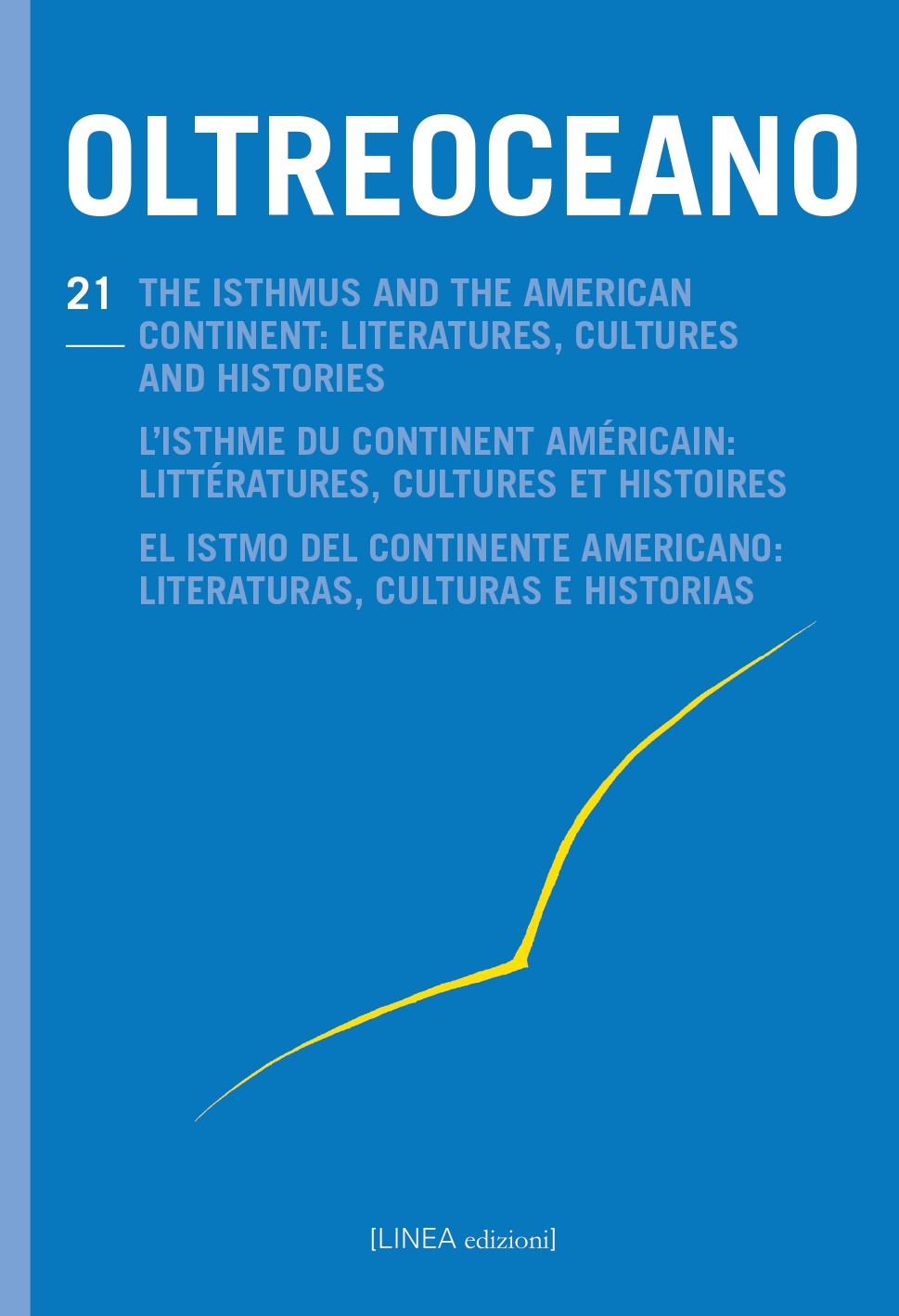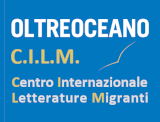Mobilizing the Grid. Collaborative Creativity in Public Space, and Radical Artistic Flows from South to North. From “Sandinista” to “Zapatista” to “Occupy Wall Street”
DOI:
https://doi.org/10.53154/Oltreoceano64Parole chiave:
grid, public art, public space, the Americas, resistanceAbstract
The article at hand explores the mobility of artistic ideas and practices within the Americas and analyzes collaborations between artists from the South and the North. In particular it looks at artistic collaborations between artists from Panama, Nicaragua, Mexico and the US that embrace radical aesthetics defining art as tool for social change. In which way these artists challenge and change the public sphere by practicing art within public space is the major research question guiding the analysis. Revisiting public space in the Americas also means to return to the foundational pattern of structuring space in the American hemisphere: the grid. The grid is considered the foundational architectural and urban structure to colonize and organize space in the Americas for purposes of spatial community-building and expansion. the grid contains tremendous power to shape the social in spatial terms. Functioning both horizontally and vertically, it supports the expansion of territory as well as the extension of architecture. This article reads the grid as a fundamental “American” structure–a “space of entanglement” that sets spatial limits to utopia but also provides open spaces between the metal, steel, and iron through which voices of the dispossessed can pass and through which new forms of participation, interaction, and community emerge.
Mobilitare il reticolo. L’arte nello spazio pubblico e flussi artistici radicali dal Sud al Nord: dal sandinismo allo zapatismo, a Occupy Wall Street
Il saggio esplora la mobilità di idee e pratiche artistiche tra le Americhe e analizza le collaborazioni tra artisti del Sud e del Nord delle Americhe. In particolare, prende in esame le collaborazioni tra artisti provenienti da Panama, Nicaragua, Cuba, Messico e Stati Uniti che adottano estetiche radicali che definiscono l’arte come strumento di cambiamento sociale. Questo studio si interroga sulle modalità con cui gli artisti problematizzano e tentano di cambiare la sfera pubblica installando la loro arte nello spazio pubblico. La rivisitazione dello spazio pubblico nelle Americhe implica anche un ritorno al motivo fondativo che struttura lo spazio nell’emisfero americano: il reticolo. Infatti, esso è considerato la struttura architettonica e urbana fondativa che ha colonizzato e organizzato lo spazio nelle Americhe a fini di espansione e costruzione spaziale della comunità. Il reticolo contiene un eccezionale potere di plasmare il sociale in termini spaziali. Funzionando orizzontalmente e verticalmente, il reticolo soggiace alla logica di espansione territoriale e di estensione architettonica. Questo saggio rilegge il reticolo come una fondamentale struttura “americana” – uno spazio di “imbrigliamento” che pone limiti spaziali all’utopia ma che fornisce anche spazi aperti tra metallo, acciaio e ferro, in cui transitano le voci degli sfruttati e attraverso cui emergono nuove forme di partecipazione, interazione e comunità.
Downloads
Riferimenti bibliografici
Bauman, Z. (2000): The Liquidity of Modernity. Cambridge: Cambridge Polity Press.
Beck, U. (1999): World Risk Society. New York: Polity Press.
Benhabib, S. (2002): The Claims of Culture. Princeton, N.J.: Princeton University Press.
Blunderbuss Magazine (2014): The Illuminator. Retrieved from http://www.blunderbussmag.com/author/theilluminator/ (Last accessed 29/10/2022).
Butler, J. (1997): Excitable Speech: A Politics of the Performative. London and New York: Routledge.
Butler, J. & Athanasiou, A. (2013): Dispossession: The Performative in the Political. New York: Polity Press.
Coronil, F. (2002): The Future in Question: History and Utopia in Latin America (1989-2010). In C. Calhoun & G. Derluguian (Eds.), Business As Usual: The Roots of Global Financial Meldown (pp. 231-264). New Haven: Yale University Press.
Flores, T. (2013): Mexico’s Revolutionary Avant-Gardes: From Estridentism to !30-30!. New Haven and London: Yale University Press.
Fraser, N. (1990): Rethinking the Public Sphere: A Contribution to the Critique of Actually Existing Democracy. Milwaukee: University of Wisconsin.
Galante, R. (2008): La cultura sí importa. Crítica, 952, pp. 46-50.
Glaveanu, V. P. & al. (2019): Advancing Creativity Theory and Research: A Socio-Cultural Manifesto. The Journal of Creative Behavior, 54, 3, pp. 741-745.
Habermas, J. (1989): The Structural Transformation of the Public Sphere: An Inquiry into a Category of Bourgeois Society. Cambridge: MIT Press.
Held, D. (2010): Cosmopolitanism: Ideals and Realities. Cambridge: Polity Press.
Kaltmeier, O. (Ed.) (2011): Selling EthniCity: Urban Cultural Politics in the Americas. Farnham: Ashgate.
Kunzle, D. (1995): The Murals of Revolutionary Nicaragua, 1979-92. Berkely: University of California Press.
Leonardi, P. (2017): The Social Media Revolution: Sharing and Learning in the Age of Leaky Knowledge. ScienceDirect, 27, 1, pp. 47-59.
Mayar, M. (2022): Citizens & Rulers of the World. The American Child and the Cartographic Pedagogies of Empire. Chapel Hill: The University of North Carolina Press.
McKee, Y. (2017): Strike Art. Contemporary Art and the Post-Occupy Condition. New York: Verso.
Mouffe, Ch. (2005): On the Political. London / New York: Routledge. Print.
Mouffe, Ch. (2007): Art as an Agonistic Intervention in Public Space. In Ch. Mouffe (Ed.), Art as a Public Issue: How Art and its Institutions Reinvent the Public Dimension (pp. 1-7). Rotterdam and Amsterdam: NAI Publishers.
Quijano, A. & Wallerstein, I. (1989): Americanity as a Concept, or the Americas in the Modern World System. International Sociological Association, 1, 134, pp. 549-556.
Plaza Azuaje, P. (2010): Madre armada y niño: Representación de la mujer nueva en los murales de la Revolución Sandinista en Nicaragua. Apuntes, 23, 1, pp. 8-19.
Pliego Quijano, S. (2013): El hombre en la encrucijada. El mural de Diego Rivera en el centro Rockefeller. México, D.F.: Trilce.
Raussert, W. (2017): Art Begins in Streets, Art Lives in Streets. Bielefeld: kipu.
Raussert, W. (2020): Muralism. In W. Raussert & al. (Eds.), The Routledge Handbook to the Culture and Media of the Americas (pp. 402-413). New York: Routledge.
Sennett, R. (1991): The Conscience of the Eye: The Design and Social Life of Cities. New York: Faber and Faber.
Tufekci, Z. (2017): Twitter and Tear Gas: The Power and Fragility of Networked Protest. New Haven: Yale University Press.
Urry, J. (2007): Mobilities. Cambridge: Polity Press.
Wright, L. (2018): Socially Engaged Street Art. Retrieved from https://worldview.unc.edu/wpcontent/uploads/sites/433/2018/07/PaintingI_ART240_LancasterWright_StreetArt.pdf (Last accessed 14/06/2022).
Youkhana, E. & Förster, L. (Eds.) (2015): Grafficity: Visual Practices and Contestations in Urban Space. Köln: Morphomata. Print.
Downloads
Pubblicato
Come citare
Fascicolo
Sezione
Licenza

Questo lavoro è fornito con la licenza Creative Commons Attribuzione - Non commerciale - Condividi allo stesso modo 4.0 Internazionale.
Gli autori si impegnano a rispettare le seguenti condizioni, che s’intendono accettate al momento della sottomissione per la stampa dei propri contributi.
L’invio di un testo implica che esso sia inedito e non in attesa di essere pubblicato altrove.Gli autori si impegnano a rispettare le seguenti condizioni, che s’intendono accettate al momento della sottomissione per la stampa dei propri contributi.
- Qualora venga accettato, l’autore conferisce all’editore il diritto di pubblicarlo e distribuirlo sia in forma cartacea che nell’edizione elettronica in rete. Gli articoli pubblicati saranno scaricabili e resi disponibili in open access.
- Purché segnali correttamente che la prima pubblicazione è avvenuta sulla rivista «Oltreoceano. Rivista sulle migrazioni», l’autore ha facoltà di: a) riprodurre l’articolo in estratti separati o raccolti in volume; b) pubblicare l’articolo nel proprio sito personale o in quello di corsi di insegnamento purché si tratti di siti di natura non commerciale; c) depositare l’articolo in archivi online di carattere non commerciale, legati all’istituzione di appartenenza o come parte di progetti di diffusione non commerciale e open access dei lavori scientifici.
Non è consentita l’utilizzazione dei contributi da parte di terzi, per fini commerciali o comunque non autorizzati. L’editore declina ogni responsabilità sull’uso non autorizzato del materiale pubblicato sulla rivista.













